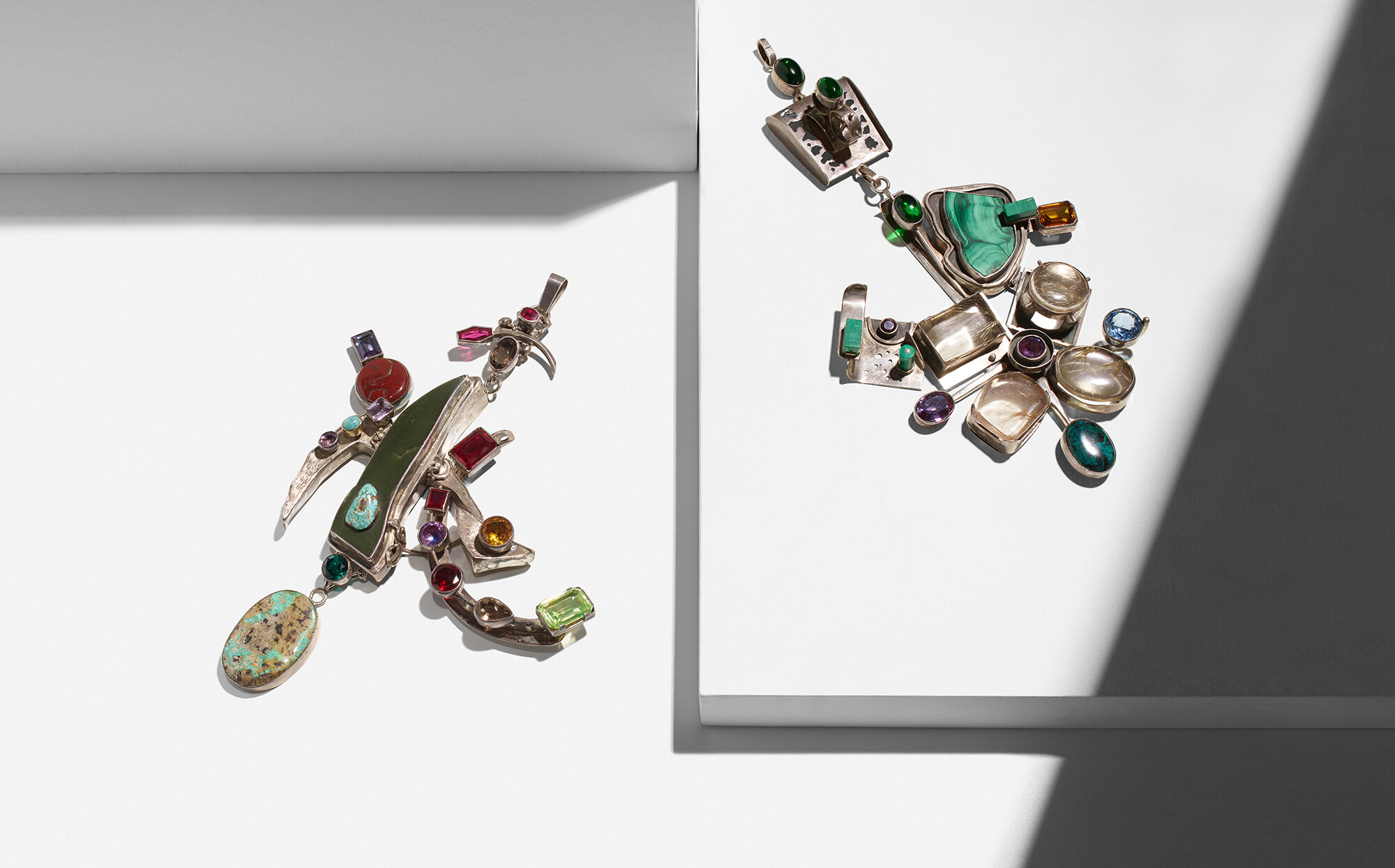122
122
USA, 1971
forged, fabricated and oxidized sterling silver with gold inlay, 14 karat gold, labradorite, sapphire, pearl 8½ h × 5¾ w × 1½ d in (22 × 15 × 4 cm)
forged, fabricated and oxidized sterling silver with gold inlay, 14 karat gold, labradorite, sapphire, pearl 8½ h × 5¾ w × 1½ d in (22 × 15 × 4 cm)
estimate: $25,000–35,000
result: $27,500
follow artist
Impressed signature to reverse ‘Paley Sterling 14k’. This work is registered with The Paley Archive as # JP 1971 05.
provenance: Collection of the artist
literature: Albert Paley Sculptural Ornament, Renwick Contemporary American Craft Series, pg. 45 illustrates this example
























